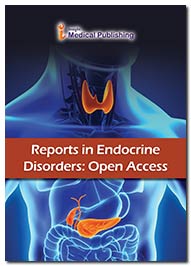A novel direct insulin-resistance biomarker called serum IRAP
Abstract
Insulin resistance (IR) affects more than half of the adult population worldwide. Type 2 diabetes (T2D), which often follows in the absence of treatment, affects more than 400 million people and represents more than 10% of the health budget in industrialized countries. A preventive public health policy is urgently needed in order to stop this constantly progressing epidemic. Indeed, early management of IR does not only strongly reduce its evolution towards T2D but also strongly reduces the appearance of cardiovascular comorbidity as well as that of associated cancers. There is however currently no simple and reliable test available for the diagnosis or screening of IR and it is generally estimated that 20% of diabetics are not diagnosed. We therefore developed an ELISA for the quantitative determination of a novel circulating biomarker of IR, IRAP (Insulin-Regulated Amino Peptidase, EC 3.4.11.3). IRAP is associated with and translocated in a stoechiometric fashion to the plasma membrane together with GLUT4 in response to insulin in skeletal muscle and adipose tissue. Its extracellular domain (IRAPs) is subsequently cleaved and secreted in the blood stream. In T2D, IRAP translocation in response to insulin is strongly decreased. Our patented sandwich ELISA is highly sensitive (≥ 10.000- fold normal fasting concentrations) and specific, robust and very cost-effective. Dispersion of fasting plasma concentration values in a healthy population is very low (101.4±15.9 μg/ml) as compared to insulin and C-peptide. Results of pilot studies indicate an excellent correlation between IRAPs levels and insulin sensitivity. We therefore think that plasma IRAPs is a direct marker of insulin sensitivity and that the quantitative determination of its plasma levels should allow large-scale screening of populations at risk for IR and T2D; thereby allow the enforcement of a preventive health policy aiming at efficiently reducing this epidemic.
Open Access Journals
- Aquaculture & Veterinary Science
- Chemistry & Chemical Sciences
- Clinical Sciences
- Engineering
- General Science
- Genetics & Molecular Biology
- Health Care & Nursing
- Immunology & Microbiology
- Materials Science
- Mathematics & Physics
- Medical Sciences
- Neurology & Psychiatry
- Oncology & Cancer Science
- Pharmaceutical Sciences
